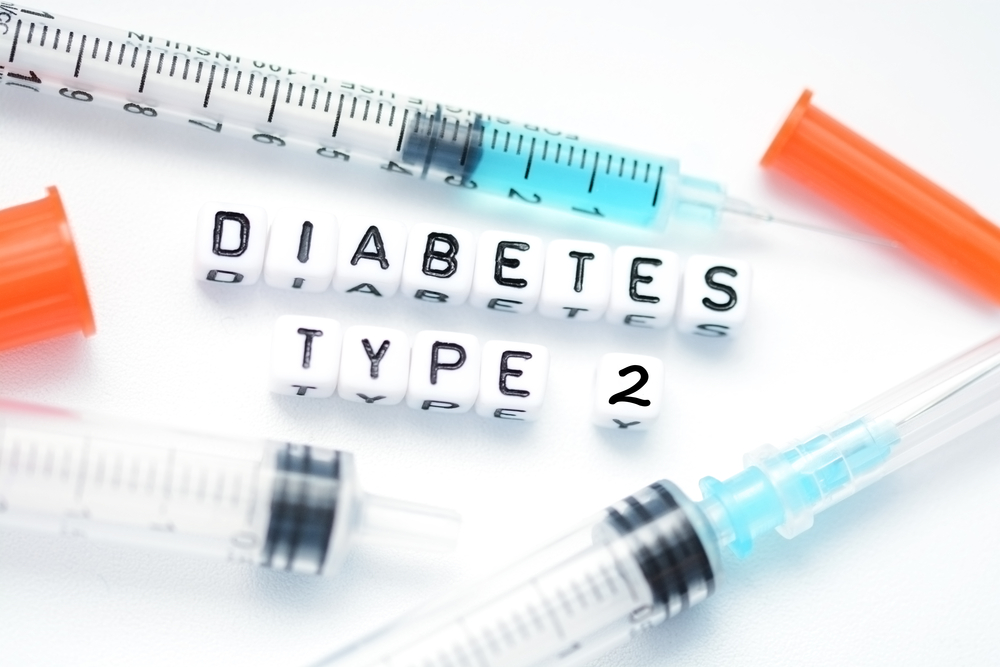
Overview
Type 2 diabetes is a defect in the way your body processes and uses sugar (glucose)
It affects your body’s ability to make insulin, the hormone that helps glucose penetrate your cells to produce energy.
With type 2 diabetes, your body renders the insulin ineffective or does not produce enough insulin to maintain adequate glucose levels.
It was previously known as adult-onset diabetes. However, today, more children are being diagnosed with the disorder. Childhood obesity has been attributed to a high case of type 2 diabetes in children.
There is no cure for this condition, but losing weight, eating a healthy diet and regularly exercising can help manage the disease.
You may also need diabetes medications or insulin therapy if diet and exercise are insufficient to manage and reduce your blood sugar to a healthy level.
Key facts
- Type 2 diabetes is a chronic health condition that causes a critical rise in blood sugar (glucose).
- Its symptoms include excessive thirst, needing to pee a lot and tiredness. It can also increase your risk of eye, heart and nerve problems.
- It is a lifelong condition that can affect your everyday life. Most times, you would require a change of diet, medications, and the need to go for regular check-ups.
- It is caused by a malfunction of a hormone called insulin.
- Middle-aged or older people are more at risk of this condition. This is why it was once christened adult-onset diabetes.
- It is the most common type of diabetes.
Symptoms
Symptoms include:
- Unusual and frequent thirstiness
- Peeing a lot
- Blurry vision
- Mood swings or being cranky
- Tingling or numbness in your hands or feet
- Fatigue/feeling worn out
- Wounds that do not heal
- Recurring yeast infections
- Hunger
- Weight loss without trying
- Getting more infections
- Dark rashes around your neck or armpits (called acanthosis nigricans) are often a sign of insulin resistance.
Diagnosis
Your health caregiver can test your blood for signs of type 2 diabetes. Typically, you’d be tested for two days to confirm the diagnosis. However, if your blood glucose is very high or shows several symptoms, you might only need one test.
A1c – This test measures the average of your blood glucose over the past 2 or 3 months.
Fasting plasma glucose. Another name for the procedure is the fasting blood sugar test. It measures your blood sugar on an empty stomach. You would not be able to eat or drink anything except water for 8 hours before the test.
Oral glucose tolerance test (OGTT).
This test measures your blood glucose before and 2 hours after you drink something sweet to see how your body processes the sugar.
Causes
Usually, a combination of things causes type 2 diabetes. They might include:
- Genes – Scientists have found different DNA bits affecting how your body produces insulin.
- Excess weight – Studies have linked overweight or obesity to insulin resistance, especially if you carry the extra pounds around your middle.
- Metabolic syndrome – Insulin resistance often leads to other health conditions. They range from high blood sugar, extra fat around the waist, high blood pressure, and high cholesterol and triglycerides.
- Too much glucose from your liver – One of the liver’s many responsibilities is regulating blood sugar and sending some out when the level is low. When you eat, your blood sugar goes up. Typically, your liver will slow down and store its glucose for later. However, some people’s livers do not do this. They instead keep churning out sugar.
- Cells not communicating correctly – Sometimes, cells send the wrong signals or do not pick up messages correctly. This affects how your cells make and use insulin or glucose; cascading into a chain reaction can lead to diabetes.
- Broken beta cells – When your beta cells (insulin-producing cells) are broken, they may send out an incorrect amount of insulin at the wrong time. This will tip your blood off balance resulting in type 2 diabetes. High blood sugar can also damage these cells.
Prevention
- Lose weight – Dropping just 7% to 10% of your weight can cut your risk of type 2 diabetes in half.
- Get active – Thirty minutes of brisk walking daily will cut your risk by almost one-third.
- Eat right – Avoid highly processed carbs, sugary drinks, and trans and saturated fats. Limit red and processed meats.
- Weight loss: Dropping extra pounds can help. While losing 5% to 10% of your body weight is good, losing 7% and keeping it off is recommended. This means people who weigh 180 pounds can get their blood sugar levels to a healthy place by losing at least 13 pounds. Weight loss can prove difficult initially, but portion control and eating healthy foods are good places to start.
- Healthy Eating: There is currently no fixed diet for people with type 2 diabetes. However, you can seek advice on carbs intake and control from a registered dietician. This would help you make a meal plan that would not be too rigorous, one you can stay faithful to.
It would be best if you focused on the following:
- Reducing your calories intake
- Cutting back on refined carbs, especially sweets
- Adding veggies and fruits to your diet
- Getting more fibre
- Exercise. Your goal should be to clock 30 to 60 minutes of physical activity daily. You can either cycle a distance, take a walk, swim, or engage in vigorous activities to get your heart pumping. You can also pair it with gym activities like weight lifting or yoga. However, if you are on medications that lower your blood sugar, you might need a bite on a quick snack before working out.
- Watch your blood sugar levels: Your doctor will tell you how often you need to test your blood sugar or if at all, depending on your treatment, especially if you are on insulin. With diligence and consistency, you might be able to reach your target blood sugar levels with diet and exercise alone.
Conclusion
Type 2 diabetes is a chronic disease that inhibits your body’s insulin usage. People with type 2 diabetes are said to have insulin resistance.
Middle-aged or older people are most at risk of getting this kind of diabetes, which used to be called adult-onset diabetes. However, type 2 diabetes affects kids and teens, mainly due to childhood obesity. It is the most common type of diabetes.
MOST COMMON






